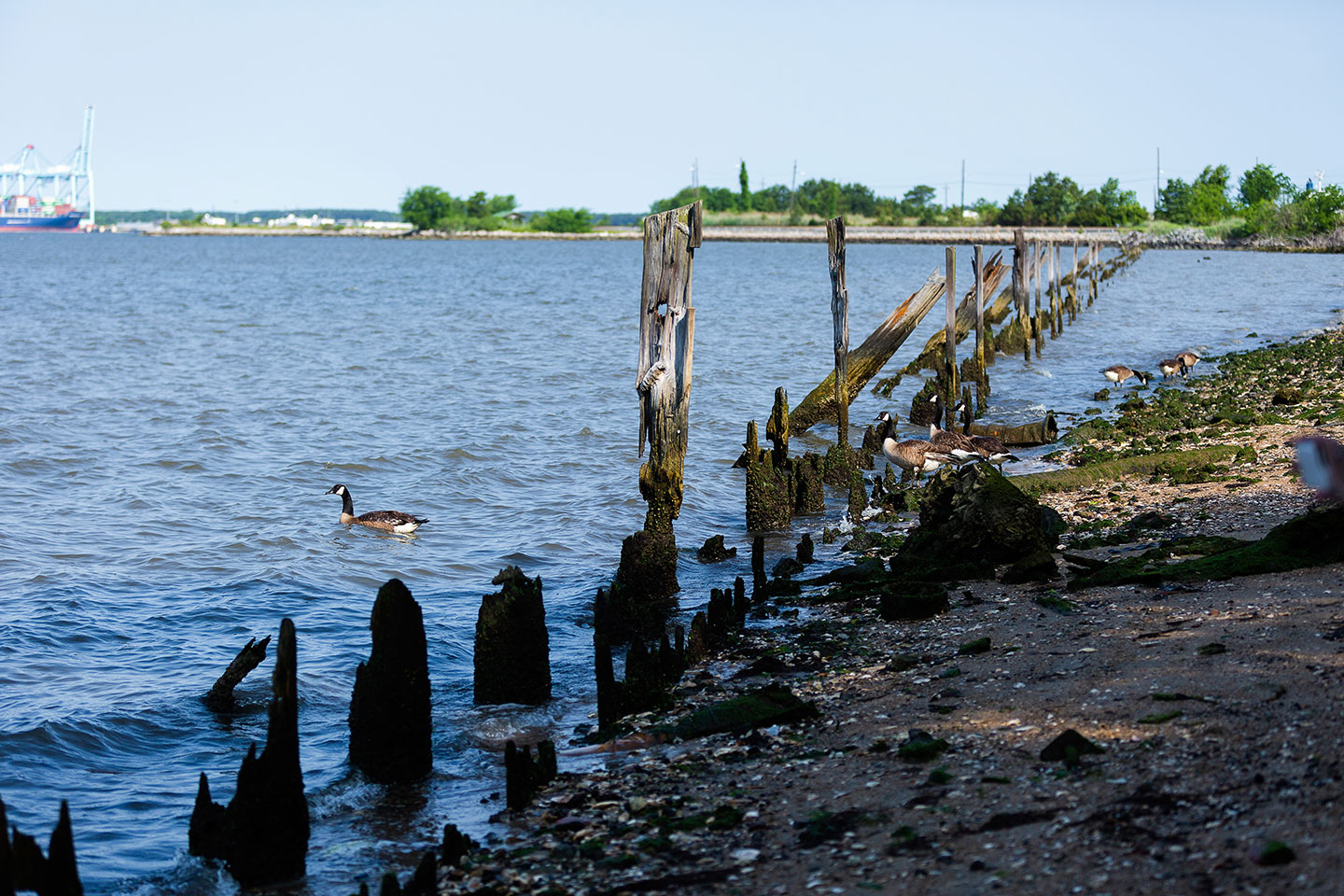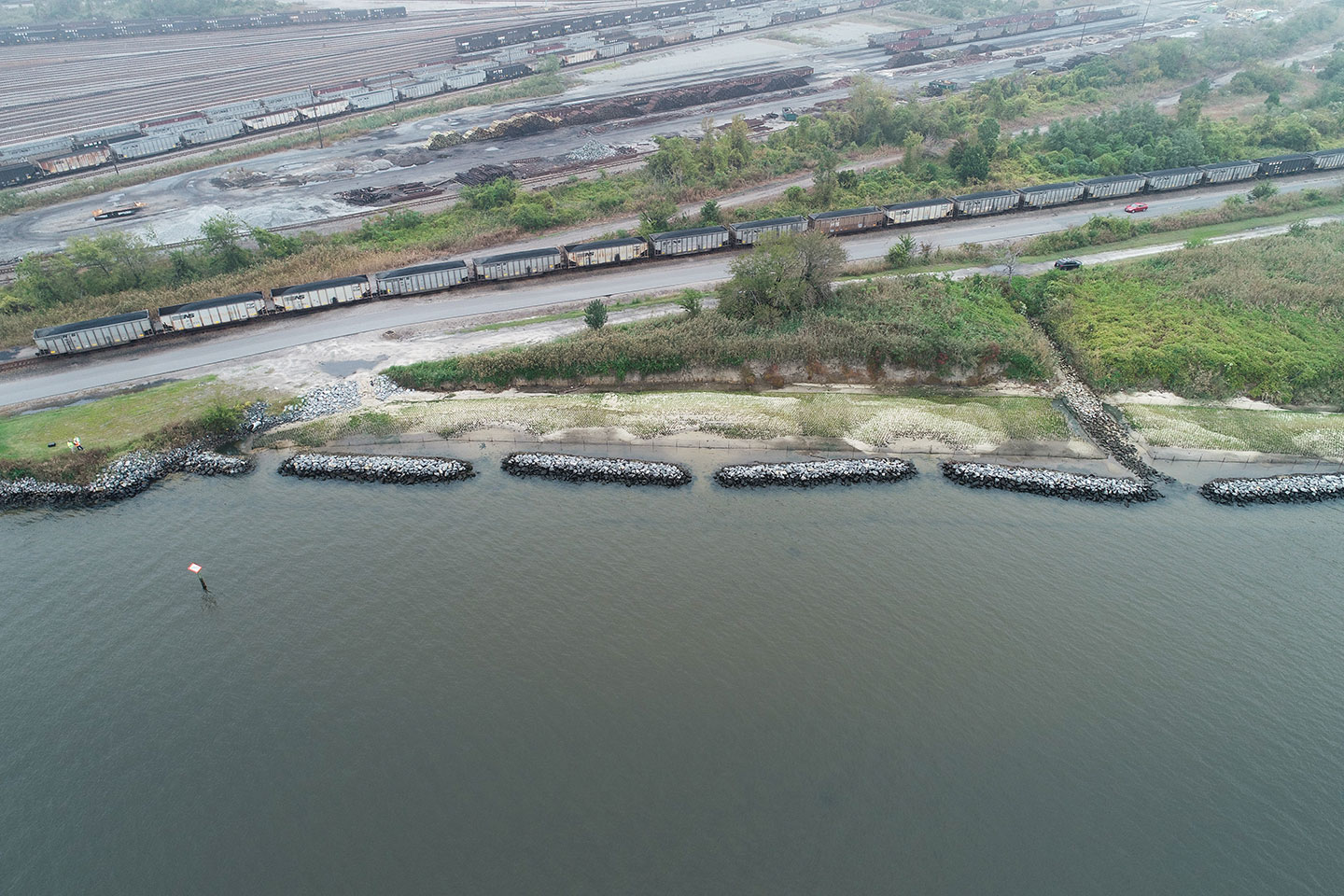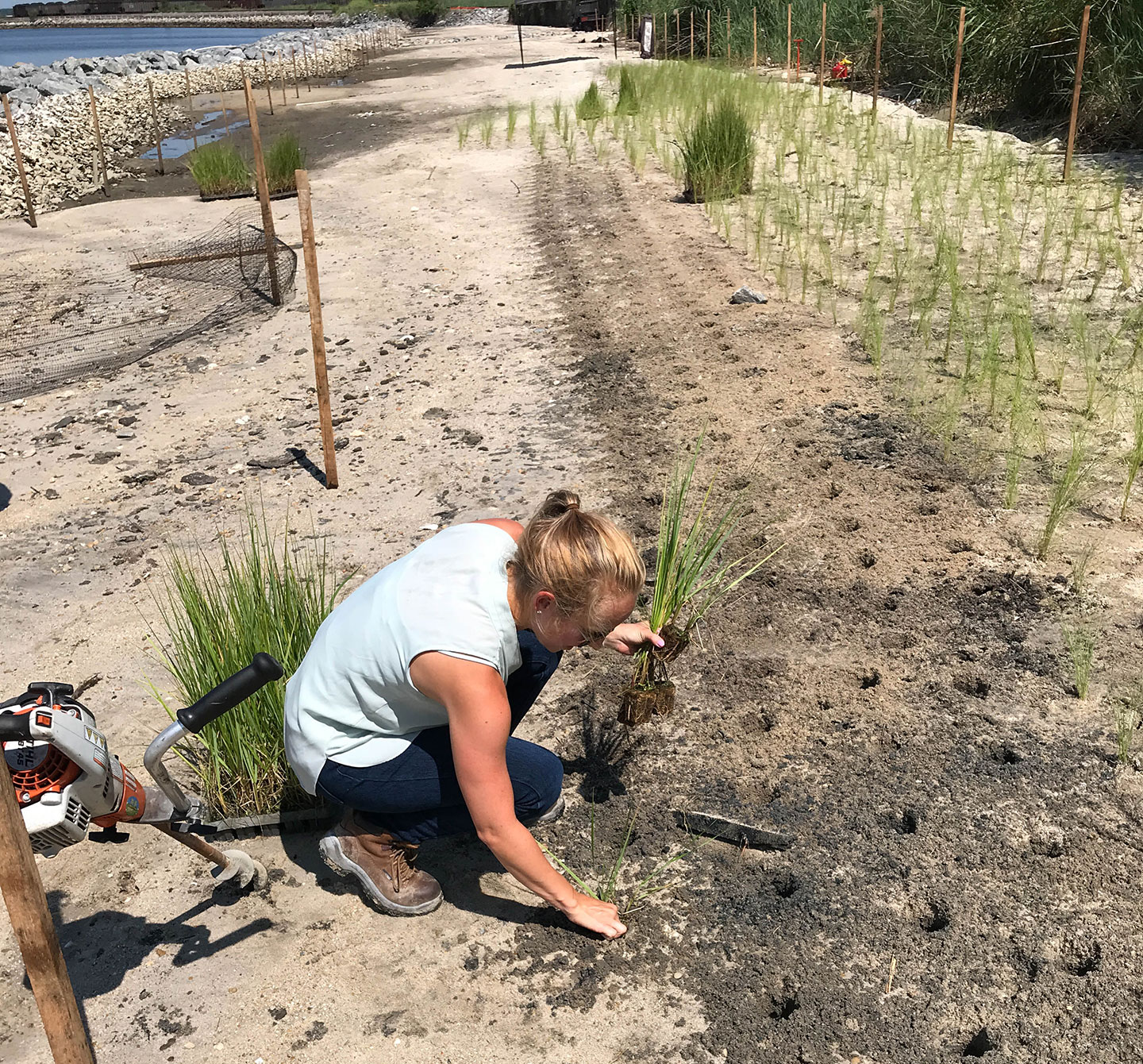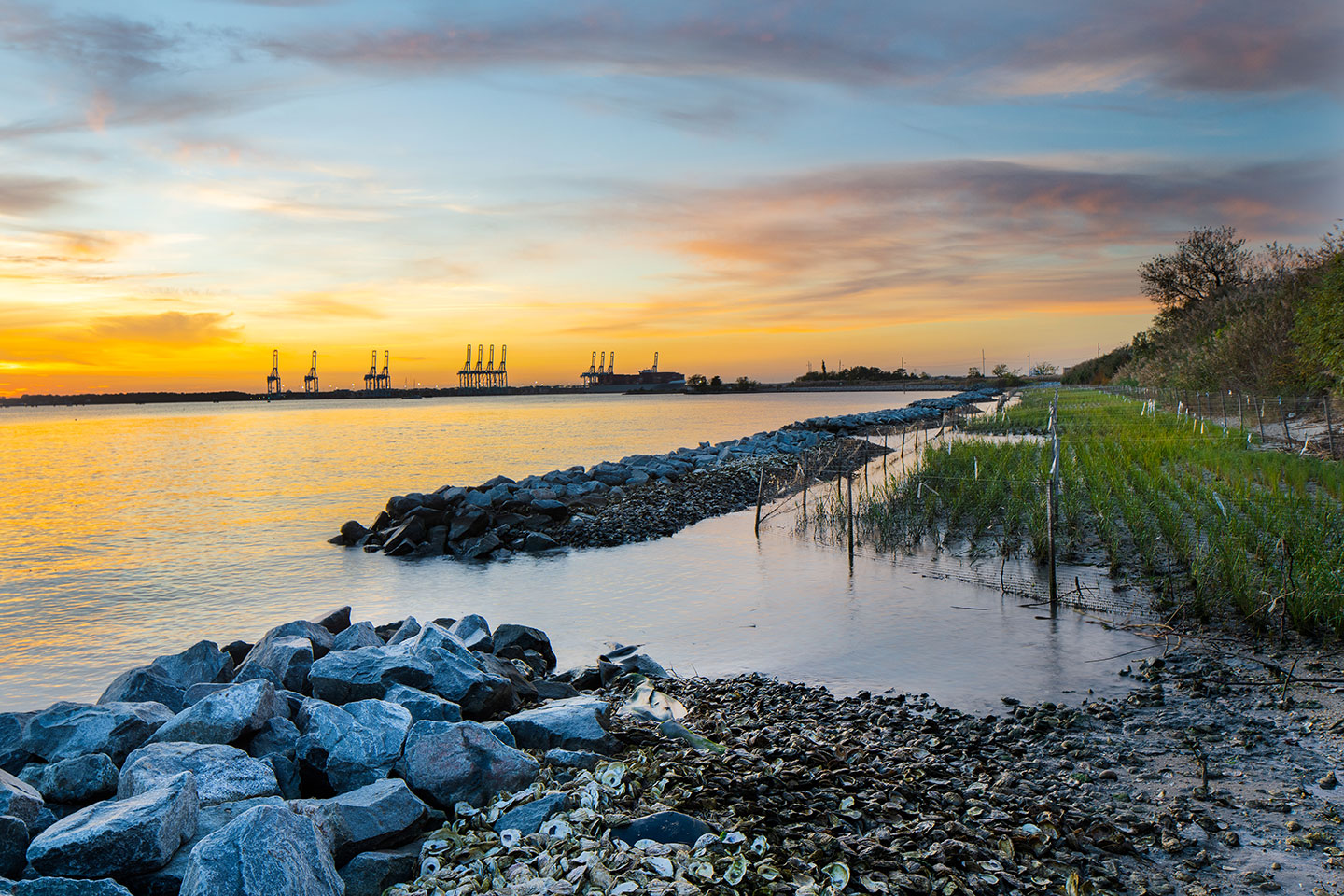Norfolk Southern Railway Company is a large-scale transportation company that operates roughly 19,300 miles of rail network across 22 states along the East Coast. Norfolk Southern is a major transporter of industrial goods, including agriculture, forest and consumer products, chemicals, metals, and construction materials. The railway network is a link between the goods we need for everyday life and the source of those goods.
One of Norfolk Southern’s main ports is Lamberts Point Coal Terminal, which is located along the Elizabeth River in Norfolk, Virginia. Lamberts Point is home to Pier VI—the largest and fastest rail-to-ship transloading facilities in the northern hemisphere and home to many important railway assets. This industrial riverfront generates jobs and other economic benefits for the region.
Local Efforts to Improve the Shoreline
Norfolk Southern recognizes the advantages that the Elizabeth River brings to its operations and is committed to supporting community initiatives to clean and preserve the river’s water quality. Additionally, Norfolk Southern realized the importance of stabilizing the shoreline, which if left unattended, would continue to retreat due to erosion and rising coastal tides.
Through our existing sustainability contract, Norfolk Southern engaged us to design a living shoreline that would provide habitat for oysters, river otters, shore birds, and other wildlife on the Elizabeth River, while also protecting railroad property at Lamberts Point from increasing coastal hazards.
 The pre-construction conditions depict a historical bulkhead that shows how much of Norfolk Southern’s property has eroded.
The pre-construction conditions depict a historical bulkhead that shows how much of Norfolk Southern’s property has eroded.
What is a Living Shoreline?
A
living shoreline is a hybrid approach to shoreline management that provides erosion control benefits; protects, restores, and enhances natural shoreline habitat; and maintains coastal processes through strategic placement of plants, stone, sand fill, and other structural organic materials.
To begin this project, we looked at the historical conditions of the soil to see how they have changed over time. It became evident that a large amount of the soft soils have been lost, and combined with sea level rise, there was a risk that the roadway and rail lines adjacent to the shoreline would become unusable.
A living shoreline is a hybrid approach to shoreline management that provides erosion control benefits; protects, restores, and enhances natural shoreline habitat; and maintains coastal processes through strategic placement of plants, stone, sand fill, and other structural organic materials.”
Alaurah Moss Jordan
Our team developed several living shoreline design alternatives, ranging from re-grading the steep bank and stabilizing the shoreline with a joint-planted rock revetment, to an offshore breakwater system that would slowly, over time, extend the shoreline to its historical position. After comparing benefits of the alternatives, we found that the offshore breakwater living shoreline approach would optimize the desired project benefits within the client’s budget.
 Norfolk Sothern’s railway can be seen in this photo, as well as an important roadway. Without implementing the living shoreline measures, the roadway and track system were left open to flooding vulnerabilities.
Norfolk Sothern’s railway can be seen in this photo, as well as an important roadway. Without implementing the living shoreline measures, the roadway and track system were left open to flooding vulnerabilities.
Final Design and Implementation
Our living shoreline design involved several components, that together, create an oasis of green extending nearly three football fields along the industrial shoreline. A series of small rock breakwaters positioned offshore along the historical shoreline buffers the shoreline from wind waves and ship wake. The gaps between the breakwaters allow access for aquatic life and sediment nourishment of the wetland vegetation during high tides. To rebuild the eroded shoreline, the engineered beach required 2,300 cubic yards of sand—roughly 200 dump truck loads. Nearly 24,000 plantings of native saltwater marsh stabilize the engineered beach and provide wildlife habitat. Roughly 90 cubic yards of recycled oyster shells placed on the backside of the breakwaters create an inviting habitat for native Elizabeth River oysters.
 Our team helping subcontractor Emerald Forest with wetland vegetation plantings.
Our team helping subcontractor Emerald Forest with wetland vegetation plantings.
Following the design phase, we helped Norfolk Southern oversee construction of the living shoreline so it was built according to the design plans and specifications. Construction was completed in July 2020, and we continue to support Norfolk Southern with post-construction monitoring of project performance. The project team is happy to report that the living shoreline successfully endured its first large storm during the fall 2020 hurricane season. The project received the Inside Business River Star Hall of Fame award for 2021 presented by the Elizabeth River Project.
 The living shoreline at the Lamberts Point Terminal helps bring the natural system back into balance, while protecting critical infrastructure and reclaiming lost land.
The living shoreline at the Lamberts Point Terminal helps bring the natural system back into balance, while protecting critical infrastructure and reclaiming lost land.